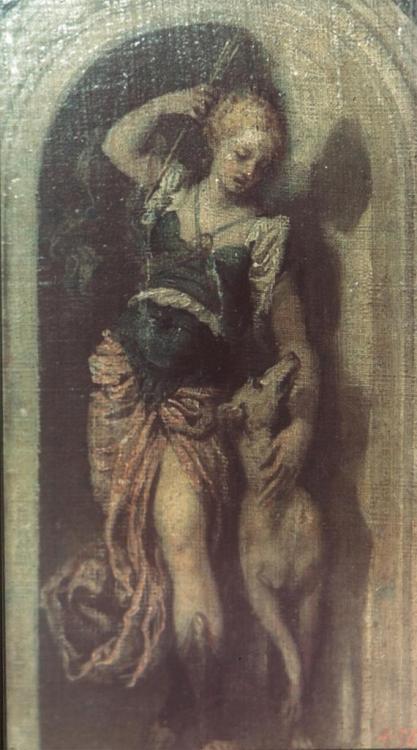italianartsociety:Dogs in Roman Life and ArtThough she was educated at Cambridge and because a full
italianartsociety:Dogs in Roman Life and ArtThough she was educated at Cambridge and because a full professor at Oxford University, archaeologist and art historian Joceyln Toynbee published under the initials J.M.C. Toynbee, a testament to the difficulties she encountered as a woman in 20th Century British academia, particularly launching what was then a new subject, the study of animal behavior through their depiction in artwork. Toynbee’s great work, Animals in Roman Life and Art (1973, reprinted: London: Pen & Sword, 2018) has just at last been reprinted and is again available at a very reasonable price. Toynbee elaborates through observation and research on what is clear through sculpture, mosaics, and architecture from the Empire: Animals were important to the Romans. Dogs in particular were significant throughout the Imperial world. Decades of excavations have uncovered dozens of dogs of all types, ranging from terrier- to Labrador- and even greyhound-sized. Some were stillborn or died at birth, while others lived to ripe old ages. And although a few dogs show clear signs of having been killed deliberately, at least one was very well treated. Although the dog was rendered permanently lame by multiple leg fractures, it bore no trace of infection, suggesting that its paw was cleaned and immobilized, allowing it to heal properly. This past year a team led by archaeologist Nina Crummy, working in Silchester, England, found an early third-century pit with the remains of a puppy that was killed (the team is not sure how), two other dogs, a raven, and two doubly-pierced pot sherds. The dogs were also buried with a knife that was probably used as a razor and had an ivory handle in the form of two coupling dogs. According Crummy, the excavation’s finds specialist, the burial of the knife, an expensive object that had been made on the continent, would not have been lightly undertaken. “It should be interpreted as a deliberate burial, either as a kind of grave gift accompanying the burial of a pair of valued dogs, or a votive offering connected with the ritual life of the inhabitants [of this area of the city],” she says.The dogs from Silchester are also evidence that in the Roman world, small dogs were favored over larger ones. According to University of Winnipeg archaeologist Michael MacKinnon, the spread of toy breeds by the Romans represents shifting attitudes toward pet-keeping, or an ardent effort to incorporate pet ownership into the more regular uses of dogs, such as herding and guarding. “It seems to be a Roman phenomenon that I suspect ties in with conspicuous consumption by the elite and other attempts at wealth and showiness,” says MacKinnon. Archaeological evidence from the Roman world, including Silchester, also suggests that they may have been breeding for smaller dogs. “Bow-legged animals occur [starting in the] early Romano-British period, as does the absence of the lower third molar and crowding of the premolars,” says Kate Clark, the Silchester team’s bone specialist. “These conditions are due to the rapid diminution of the species whereby jaw size decreases faster than tooth size.” One of the most charming signs of dog life at Roman villas, farms, and military camps across Britain are the pawprints left in drying building tiles. There are dozens of these tiles from Silchester, and hundreds from Roman Britain —perhaps as many as one percent of all the tiles produced there according to Fulford — proof that it is not just modern dogs who stick their paws where they may not belong.Reference: Jarrett A. Lobell and Eric Powell. “Dogs of Roman Britain,” Archaeology, October 2010, Vol.63(5), p.31. Ivory knife handle found with a dog burial in Silchester, England. First Century. Photo: University of Reading.Paolo Veronese, Diana, c. 1560. Photo: University of California, San Diego.Roman Pedimental Relief: Bear and Dogs, Third Century. Seattle Art Museum, Nr. 6643Hunting scene floor mosaic, Fourth Century, Piazza Armerina, Sicily. Photo: Arielle Kozloff Brodkey. Great Palace Mosaic Museum, Mosaic Scene, Dogs Hunting a Rabbit, c. 530. Istanbul, Turkey. Photo: Shmuel Magal, Sites and Photos.Child and puppy, detail of a mosaic from the peristyle floor of the Great Palace of Constantinople, Sixth Century. Photo: University of California, San Diego.Further Reading: Gordon Lindsay Campbell and Michael Mackinnon. “Pets.” In The Oxford Handbook of Animals in Classical Thought and Life. Oxford: Oxford University Press, 2014. Kate Messner and Kelley McMorris. Danger in Ancient Rome (Ranger in Time #2). New York: Scholastic Press, 2015.Posted by Jean Marie Carey -- source link
#ancient rome#oets#animals#dogs#ancient#art#roman#east roman





